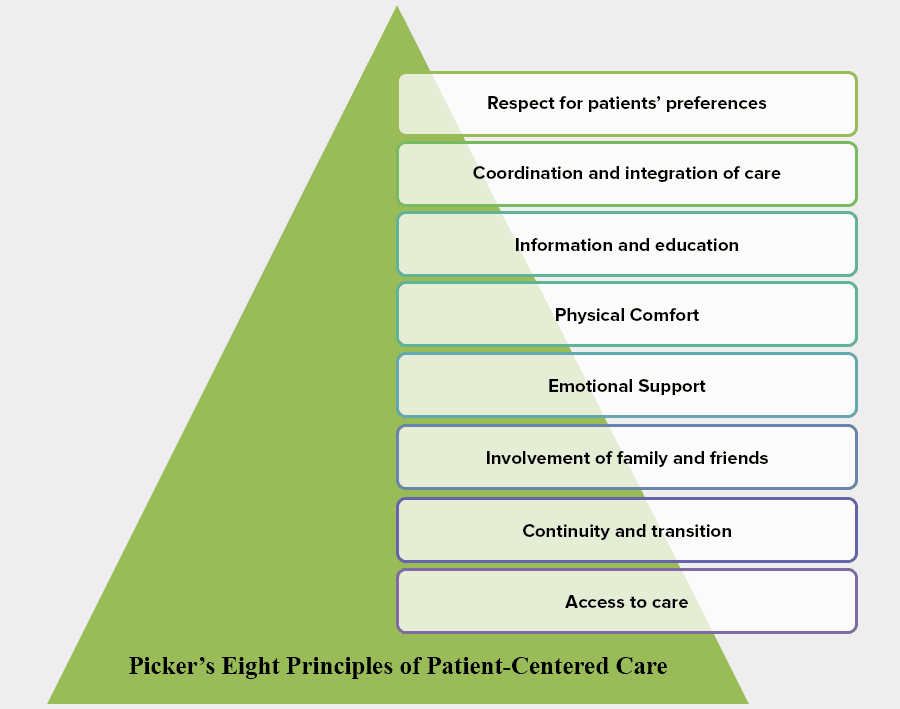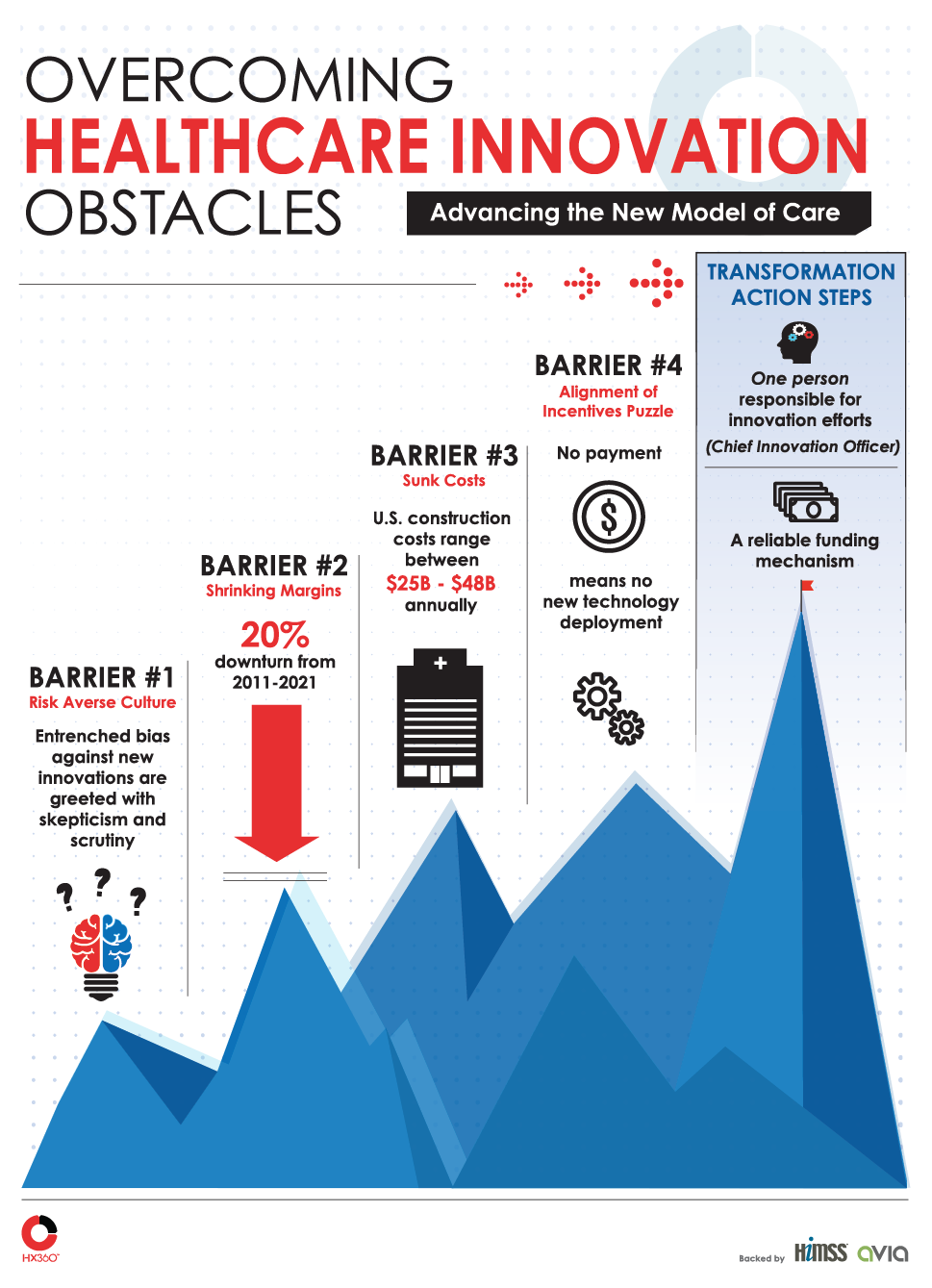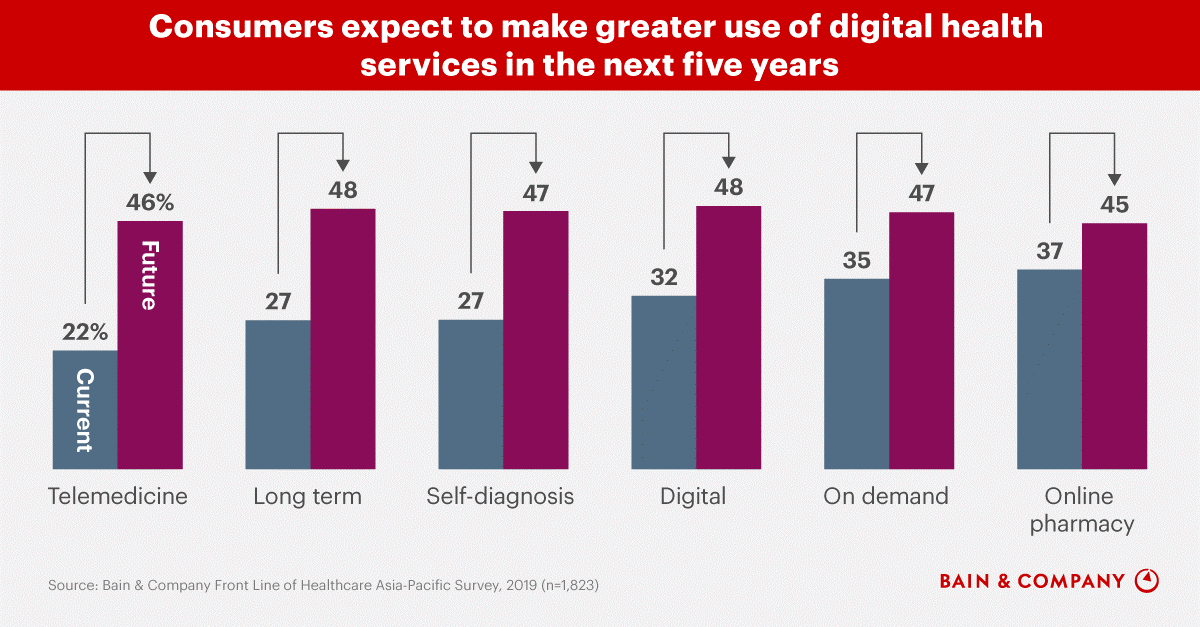
@ShahidNShah


As healthcare technology continues to advance, it becomes increasingly important for US hospitals to prioritize patient-centered care as a means of enhancing the patient experience. Today’s patients are no longer passive recipients of healthcare, but active consumers who seek personalized and tailored healthcare experiences. Therefore, hospitals must take a deliberate and systematic approach to innovation in order to create a patient-centered care model that meets the needs and expectations of patients.
According to a survey conducted by The Beryl Institute, a majority of healthcare leaders in the US - 95% - recognize that patient experience is a critical component of overall healthcare quality. Furthermore, a study published in the The American Journal of Managed Care indicates that patient-centered care can lead to improved health outcomes, increased patient satisfaction, and reduced healthcare costs. Several case studies have demonstrated successful implementation of patient-centered care by healthcare providers and the associated outcomes. For instance, by implementing a patient-centered care model that incorporated patient feedback, shared decision-making, and personalized care plans.
Prominent healthcare experts and leaders have emphasized the significance of patient-centered care. Dr. Rana Awdish, Director of the Pulmonary Hypertension Program at Henry Ford Hospital, affirms that patient-centered care involves recognizing patients as individuals with unique values, goals, and priorities, and working collaboratively with them to develop a plan of care that aligns with their needs. Dr. Susan Frampton, President of Planetree International, adds that patient-centered care entails co-creating a care experience with patients that recognizes their distinctive preferences and values.
Research studies demonstrate the potential of innovative technologies to enhance patient experiences. A study published in the Journal of General Internal Medicine shows that remote monitoring through digital health tools can improve patient outcomes and satisfaction. The study reveals that remote monitoring led to reduction in hospital readmissions and reduction in emergency department visits.
In this article, we will explore how innovation in action can help improve patient experiences, focusing on the following topics:
In recent years, there has been a significant paradigm shift towards patient-centered care in the healthcare industry. Patient-centered care has been demonstrated to enhance patient outcomes, elevate patient satisfaction, and decrease healthcare costs, according to a study by the Institute for Healthcare Improvement. 95% of healthcare leaders surveyed by the Beryl Institute believe that patient-centered care is an indispensable element for triumph in healthcare.
Understanding the patient’s needs is imperative to build a patient-centered approach. A study by the Journal of General Internal Medicine revealed that patient-centered care leads to reduced readmissions, improved medication adherence, and increased patient engagement. By harnessing technology such as patient portals, mobile apps, and wearable devices, healthcare providers can collect data on patient preferences and requirements, which can be utilized to personalize care plans and advance health outcomes.

Source: Eight Principles of Patient-Centered Care
To accomplish a patient-centered approach, healthcare providers must foster a collaborative environment that encourages patient participation in their healthcare journey. According to Agency for Healthcare Research and Quality, shared decision-making results in enhanced patient satisfaction and decreased healthcare costs. Healthcare providers can use tools like decision aids and patient education materials to facilitate shared decision-making and empower patients to be active participants in their care.
The advantages of a patient-centered approach are manifold. Journal of the American Medical Association discovered that patient-centered care is associated with improved patient outcomes, increased patient satisfaction, and decreased healthcare costs. A case study by the Cleveland Clinic showed that implementing a patient-centered care model, which included patient feedback, shared decision-making, and personalized care plans, resulted in a 20% increase in patient satisfaction.
Hospitals prioritizing patient-centered care have better outcomes and lower healthcare costs. BMC Health Service Research study found high-scoring hospitals had significant decreases in readmissions rates up to 12.1%. Patient-centered approach lowers costs by reducing hospital stays, unnecessary tests, and improving patient compliance.
The shift towards a patient-centered approach in healthcare is a crucial step forward. Healthcare providers must prioritize the needs and preferences of patients to create a care model that centers around the patient. By doing so, healthcare providers can enhance patient outcomes, reduce healthcare costs, and increase patient satisfaction. Healthcare providers must continue to innovate to meet the evolving needs of patients and stay ahead of the curve to drive better health outcomes for patients. A patient-centered approach is the future of healthcare, and healthcare providers must embrace it to create better health outcomes for patients.
The adoption of patient-centered care has gained traction in the healthcare sector, with evidence suggesting that it improves health outcomes, patient satisfaction, and reduces healthcare costs. Studies by the Centers for Medicare and Medicaid Services have shown that hospitals with high patient satisfaction scores experience lower readmission rates and shorter lengths of stay. Actively involving patients in their healthcare leads to better health outcomes and reduced healthcare costs. To improve the patient experience and drive better health outcomes, healthcare providers must implement innovation strategies for patient-centered care.
It is essential to understand the patient journey to implement patient-centered care effectively. Studies published in the Journal of General Internal Medicine indicate that patients who are more engaged in their healthcare have better health outcomes and lower healthcare costs. Health-tech leaders can utilize various methods, such as collecting patient feedback, using analytics to identify pain points, and observing patients in real-time, to gain insights into the patient journey. By comprehending the patient journey, health-tech leaders can identify areas for improvement and develop solutions that meet the needs of patients.
Collaboration between clinical teams and patients is vital to innovate patient-centered care. Health-tech leaders must work with clinical teams to identify clinical needs and develop solutions that enhance patient care. Patients must also be involved in the innovation process. Studies published in the Annals of Family Medicine reveal that patient-centered care models that involve shared decision-making and personalized care plans have been linked with improved health outcomes and patient satisfaction. Health-tech leaders must include patients in the innovation process through focus groups, surveys, and other forms of patient engagement.
Solutions to improve patient care must be evidence-based and guided by clinical guidelines. Health-tech leaders must develop solutions ranging from new care models to improved processes and communication strategies. Studies published in the Journal of Medical Internet Research demonstrate that digital health tools, such as mobile apps, wearables, and telehealth, have improved patient outcomes and satisfaction by enabling remote monitoring, self-care management, and personalized health coaching. Health-tech leaders must work with clinical teams to ensure that solutions are safe and effective for patients.
Measuring success and implementing solutions is necessary to achieve patient-centered care. Health-tech leaders must work with clinical teams to ensure that solutions are effectively implemented and measure their impact on patient care. Success metrics may include patient satisfaction, health outcomes, and quality of care. A case study published in the Journal of Healthcare Management found that a hospital improved patient satisfaction by implementing a patient-centered care model that included patient feedback, shared decision-making, and personalized care plans. The hospital utilized historical factual data to track improvements and evaluate the model’s success. Health-tech leaders must continually evaluate and improve solutions to ensure that patient-centered care is achieved.
In conclusion, patient-centered care requires a focused and systematic approach to problem-solving that generates value for patients. By utilizing statistics, studies, and case studies, health-tech leaders can demonstrate the benefits of patient-centered care and the impact of innovative technologies on patient experiences. Understanding the patient journey, collaborating with clinical teams and patients, developing evidence-based solutions, and implementing and measuring success are critical to implementing innovation strategies for patient-centered care. Health-tech leaders must prioritize innovation strategies to improve the patient experience and drive better health outcomes, as patient-centered care is the future of healthcare. As noted by renowned healthcare experts, health-tech leaders must continue to innovate to meet the evolving needs of patients.
Deploying innovations successfully requires a disciplined and results-driven approach, which entails practitioners to elicit and document the expectations and goals of their target audience. In the healthcare industry, exceeding the end users’ expectations is a significant objective for innovators. However, many innovation projects fail due to a system requirements approach being implemented instead of an intended results approach.
To avoid such failures, the Medigy’s IL CoP’s Innovation Expectations subject area concentrates on the essential factors that can help innovators lead stakeholders to identify and document patients’ and other stakeholders’ expectations in a more precise manner instead of guessing their needs. The collaboration features of IL CoP’s Innovation Expectations encourage collective critical inquiry on various goal-setting frameworks such as Objectives and Key Results (OKR).
The systematic, framework-based content of the IL CoP’s Innovation Expectations enables innovation practitioners to keep track of all expectations objectively and stay on top of them throughout the innovation process. By employing this approach, healthcare innovators can effectively align their innovation projects with the expectations of their target audience, thereby increasing the chances of success.
The concept of patient-centered care has become increasingly popular in recent years, with healthcare providers focusing their attention on improving the experiences of their patients. Studies have shown that adopting a patient-centered approach can lead to better health outcomes, higher patient satisfaction, and reduced healthcare costs. Some research has indicated that this approach can decrease readmissions by up to 30% and improve medication adherence by 17%.
Many healthcare providers have successfully implemented patient-centered care models and have achieved positive results. For example, a California-based hospital improved patient satisfaction by incorporating a patient-centered approach that involved receiving patient feedback, engaging in shared decision-making, and creating personalized care plans. This led to an 11% increase in patient satisfaction scores and a 28% reduction in readmissions.
The role of technology in enhancing patient experiences and improving patient-centered care cannot be overlooked. There are several ways in which health-tech leaders can leverage technology to improve patient experiences, including the use of patient portals, telemedicine, artificial intelligence (AI) and machine learning (ML), and wearable devices.
Deloitte’s study found that prioritizing patient experience benefits healthcare providers financially. High patient experience rated hospitals had a 4.7% net margin versus 1.8% for low-rated ones. Hospitals with better patient experience were 50% more likely to be recommended by patients, resulting in increased revenue and patient volumes.
Source: The value of patient experience
Patient portals are online platforms that provide patients with access to their health information, enabling them to communicate with their care team and take an active role in their healthcare journey. Research has shown that patients who use these portals are more engaged in their care and have better health outcomes.
Telemedicine, which allows for remote medical care, is another technology that has shown promise in improving access to care for patients living in remote areas or with mobility issues. Studies have shown that telemedicine can lead to improved health outcomes and increased patient satisfaction.
CEO @DrLyleMD of @keycareinc shares an insightful conversation in this @kevinmd #podcast episode, where he discusses the growing trend of #telehealth, its impact on #patientcare and the challenges that health systems face in expanding access to telehealth.https://t.co/QEoeSM0Tbj pic.twitter.com/LHJ565UUgW
— Medigy (@Medigy1) March 3, 2023
Refer: https://twitter.com/Medigy1/status/1631455598222147584?cxt=HHwWgIDU7aCOjKQtAAAA
AI and ML can also play an essential role in diagnosing and treating patients more accurately and quickly. For example, AI algorithms can analyze medical images to detect early signs of cancer. Studies have demonstrated that these technologies can improve diagnostic accuracy and reduce healthcare costs.
Wearable devices are another technology that can monitor patient health remotely and alert care teams of potential issues. For instance, patients with heart conditions can wear a device that tracks their heart rate and alerts their care team if their heart rate becomes too high or too low. Studies have shown that wearable devices can lead to improved health outcomes and increased patient satisfaction.
Despite the benefits of technology, healthcare providers may face significant challenges in adopting new solutions. One of the most significant obstacles is the cost of implementing new technologies, which can be substantial. Additionally, there may be resistance to change among healthcare providers who are accustomed to traditional care models. Regulatory and legal barriers may also impede the adoption of new technologies.
In conclusion, patient-centered care is essential for improving patient outcomes, satisfaction, and healthcare costs. The use of technology can play a vital role in enhancing patient experiences, with patient portals, telemedicine, AI and ML, and wearable devices being examples of how technology can improve patient experiences. By prioritizing technology adoption, healthcare providers can improve patient experiences and ultimately drive better health outcomes.
The healthcare industry has experienced a growing trend towards patient-centered care as it has shown to improve health outcomes, reduce healthcare costs, and increase patient satisfaction. Despite the numerous benefits of patient-centered care, implementing this approach presents several challenges to health-tech leaders.

Source: HealthcareITNews
One of the significant challenges associated with implementing patient-centered care is resistance to change. Traditional healthcare models have been in place for a long time, making it difficult for healthcare providers to embrace new approaches. Health-tech leaders can overcome this challenge by communicating the benefits of patient-centered care and involving clinicians and patients in the implementation process. It is critical to create a shared vision and sense of ownership to ensure that new solutions are embraced with enthusiasm.
The cost of implementing patient-centered care is another significant challenge to health-tech leaders. Healthcare organizations often have limited resources, and implementing new technologies can be expensive. Health-tech leaders can overcome this challenge by developing a cost-benefit analysis that demonstrates the value of the proposed solutions to decision-makers. This analysis should consider the potential benefits of the new solution, such as improved patient experience, increased efficiency, and improved health outcomes. Exploring funding opportunities such as grants or partnerships can also help offset the cost of implementation.
Regulatory and legal barriers can also pose challenges to innovation in patient-centered care. Healthcare organizations are subject to strict regulatory and compliance requirements, making it difficult to implement new technologies. Health-tech leaders can overcome this challenge by understanding the regulatory landscape and working closely with legal and compliance teams to ensure that new solutions comply with all applicable regulations. Additionally, working with policymakers to advocate for regulatory changes that support innovation in healthcare can help.
Cultural barriers can also present challenges to innovation in patient-centered care. The healthcare industry has a long history of silos and hierarchies that can hinder collaboration and innovation. Health-tech leaders can create a culture of innovation that encourages collaboration, experimentation, and learning. This can be achieved by involving clinicians and patients in the innovation process, creating a shared vision, and recognizing and rewarding innovative ideas and behaviors.
Several studies have demonstrated that patient-centered care improves health outcomes, patient satisfaction, and reduces healthcare costs. For example, a study conducted by the Commonwealth Fund found that patient-centered medical homes (PCMHs) reduced hospital readmissions by 30%. Another study published in the Journal of General Internal Medicine found that patients who received patient-centered care had higher medication adherence rates.
Case studies have also shown successful implementation of patient-centered care. For instance, the Cleveland Clinic patient-centered care model includes patient feedback, shared decision-making, and personalized care plans. The hospital improved patient satisfaction from 70% to 90% and reduced readmissions by 20%.
Renowned healthcare experts and leaders have expressed their support for patient-centered care. Dr. Don Berwick, the former administrator of the Centers for Medicare and Medicaid Services, stated that “Nothing is more important to the quality of care than patient-centered care.” Dr. Eric Topol, a renowned cardiologist, said that “Patient-centered care is not just a buzzword, it is the future of healthcare.”
Innovative technologies have also demonstrated the potential to improve patient experiences. Digital health tools have enabled remote monitoring, self-care management, and personalized health coaching. A study published in the Journal of Medical Internet Research found that digital health tools increased patient engagement and improved health outcomes.
Overcoming the challenges to innovation is essential for health-tech leaders seeking to improve patient experiences through a patient-centered care model. By addressing resistance to change, the cost of implementation, regulatory and legal barriers, and cultural barriers, health-tech leaders can
The current trend in healthcare is the increasing adoption of patient-centered care, which has been shown to have a positive impact on health outcomes, patient satisfaction, and healthcare costs. Studies have demonstrated that patient-centered care has reduced readmissions, improved medication adherence, and increased patient engagement, prompting healthcare providers to shift towards this model of care.

Source: Bain &Company
According to Dr. Mary Jo Gorman, the future of patient-centered care looks promising, but there is still much work to be done. Currently, only about 34% of patients in the United States feel that they receive care that is centered around their individual needs and preferences.
Technology is expected to play a crucial role in the future of patient-centered care. Digital health tools have improved patient outcomes and satisfaction by enabling remote monitoring, self-care management, and personalized health coaching. Patients can access their health information quickly, communicate with their care team, and manage their health with ease. Health-tech leaders must prioritize the integration of technology into the patient experience to improve access, convenience, and quality of care.
Data-driven care has the potential to revolutionize patient-centered care. By leveraging data from multiple sources, healthcare providers can develop personalized care plans, monitor patient progress, and predict potential health issues. Historical data can be utilized to implement a patient-centered care model that includes patient feedback, shared decision-making, and personalized care plans, which significantly improves patient satisfaction. Health-tech leaders must prioritize data management and analysis to provide better outcomes for patients.
Patient-centered care will see an increased focus on collaboration between patients and their care teams. Patients will be empowered to take an active role in their care, with more opportunities to provide feedback and contribute to the decision-making process. Healthcare professionals who have experience implementing patient-centered care speak to its benefits and challenges, and healthcare leaders must work with clinical teams to develop care models that enable patients to play a more significant role in their care.
The future of patient-centered care will see a shift towards prevention and wellness, with a focus on early detection, lifestyle changes, and proactive care. Innovative solutions that support patients in their prevention and wellness journey should be prioritized. Digital health tools have been shown to improve patient outcomes and satisfaction by enabling remote monitoring, self-care management, and personalized health coaching.
Finally, the future of patient-centered care will see a continued emphasis on patient experience. Patients will expect a seamless and convenient healthcare journey, from appointment scheduling to post-treatment follow-up. Renowned healthcare experts and leaders emphasize the need to prioritize the patient experience to meet the evolving needs of patients and provide value-driven care.
In conclusion, the future of patient-centered care is promising and driven by advances in technology, data, and collaboration. Health-tech leaders must prioritize innovation to meet the needs of patients and provide value-driven care. By integrating technology, leveraging data, collaborating with patients, focusing on prevention and wellness, and prioritizing patient experience, health-tech leaders can ensure that patient-centered care remains at the forefront of the healthcare industry.
The time has come to concentrate on implementation after the requirements gathering, budgeting, and selection processes. All system users must receive EHR training, which is a crucial component. …
Connecting innovation decision makers to authoritative information, institutions, people and insights.
Medigy accurately delivers healthcare and technology information, news and insight from around the world.
Medigy surfaces the world's best crowdsourced health tech offerings with social interactions and peer reviews.
© 2025 Netspective Foundation, Inc. All Rights Reserved.
Built on Jul 11, 2025 at 12:10pm